What is the Best Strength Training for Endurance Runners and Cyclists?

Strength training is not always the priority for endurance athletes who love to be outside doing their sport but it can be a great way to avoid injury and make performance gains. So what strength training is best? In my experience the strength training that you can do consistently and frequently is the best, so it's usually best to start from this premise.
What you can do frequently and consistently will depend on what motivates you, but usually the key is to find something you enjoy where you can feel that you make some gains both physically and emotionally; this can work far better than a strength programme tailored to you own weaknesses that you do maybe once a fortnight at best.
Once you have found something you can do in this way then combining this into your training plan and accounting for the fatigue it will induce is key to ensuring that you will be able to keep up your programme without getting worn out. A key element to this is accepting that you will need to make some compromises in order to fit in some extra training sessions, albeit they may not be outside doing your main sport.
Some athletes find that they work better doing focussed strength training in the winter when it's cold and dark outside and then reducing the volume of strength training in the summer time when it's more pleasant outdoors is a good compromise to make.
To help you decide what might work best for you here is a summary of the different types of strength training and how they might help you become a better endurance athlete.
1) Training for Strength Gain
Gaining muscular strength involves challenging you muscles by heaving lifting, so:-
Lift heavy, for a short number of reps with full recovery between sets.
e.g. 3 to 5 sets of 4-8 reps with 2 to 3 minutes recovery between sets
Training for strength gains isn't all about big biceps and Mr Universe. Having stronger muscles can be a really good way to protect your joints from injury and improve your overall performance by ensuring you spend less time out of your sport injured. Also if a muscle is particularly weak whilst you will be working it hard, you won't necessarily being using a lot of kilograms or pounds to work the muscle hard.
There are several ways to achieve this type of training depending on your fitness and what you prefer. In the gym you will have access to all the weights you will ever need and machines which will make lifting safer. However if you really hate gyms investing in some home equipment or even using some carefully chosen body weight exercises at home can still enable you to do a great workout.
To make decent gains doing some exercises for strength gain 2 to 3 times per week with a lighter week every month or so will help you see results.
For runners and cyclists focussing on the following areas can work well:
Quads
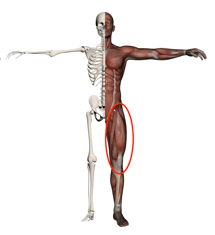
Strengthening your quads will help with both cycling and running, especially up hill or on difficult technical terrain.
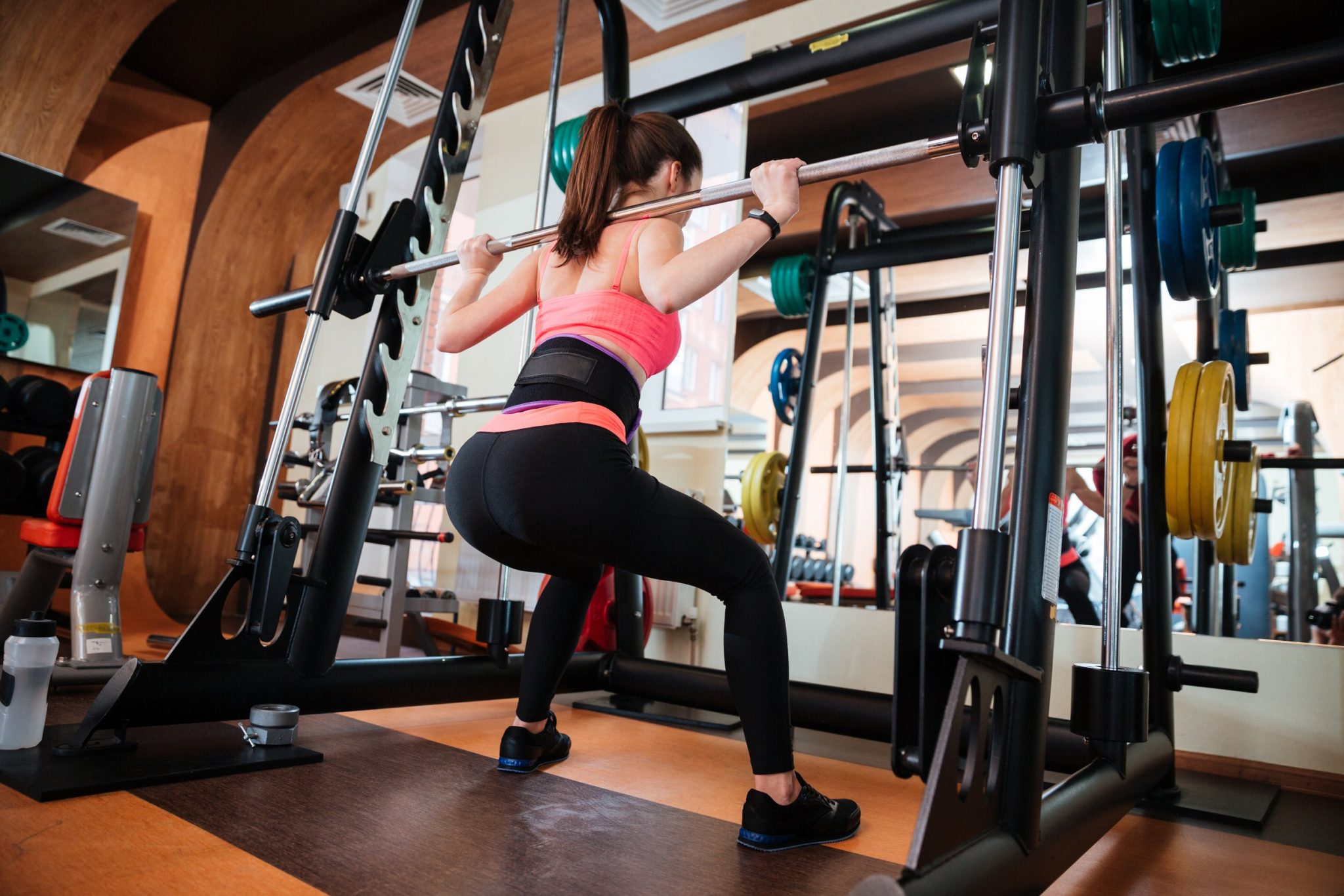
A typical exercise that targets this area is the squat which can be adapted for a variety of situations as follows:
- Single leg squat can often provide the stimulus needed for strength gain with body weight only
- Banded squats focussing on knee stability as you drop and raise
- Deep squats - bringing the focus into your hips and glutes
- Split squat again can help work the hamstrings and glutes as well as making your quads work that bit harder. It requires less balance than the single leg squat so can be a good alternative to this if your balance is not great.
- Weight can be added with an olympic bar on the back (although on your own this is then limited the weight you can clean) or using kettle bells, bands, a hex frame or a lifting frame in the gym.
Glutes
Used in both the pedalling cycling and in running this is a key target area. For runners in particular engaging the glutes is important for both stabilising the pelvis and taking the load off the hamstrings. Moving into the hips this can also help stabilise the knee helpful for both runners and cyclists.
A Good strength exercise for glutes is the Bridge which again can be progress/varied to fit your needs and strength level:
- Single leg bridges - increasing the difficulty and requiring you to stabilise your pelvis at the same time.
- Bridges off a block (this can be a stable chair/small table if you don't have a designated box). Again you can do these with a single leg to increase the difficult again.
- Weighted bridge - placing a weight on your pelvis to increase the difficulty still further; you could then progress this to hip thrusts.

Hamstrings
 Again a set of muscles used in both cycling and running and often the ones that tire (ever had hamstring cramp on a long ride?). An important part of the pedalling and running cycle and often an area that gets injured, either at the tendons round the knee or at the top of the thigh. Strengthening the hamstrings will help protect both the muscle and the tendon. A good exercise for hamstrings is the Deadlift. This exercise is great as it targets several muscle groups including hamstrings so if you are short on time this is a great exercise to choose.
Again a set of muscles used in both cycling and running and often the ones that tire (ever had hamstring cramp on a long ride?). An important part of the pedalling and running cycle and often an area that gets injured, either at the tendons round the knee or at the top of the thigh. Strengthening the hamstrings will help protect both the muscle and the tendon. A good exercise for hamstrings is the Deadlift. This exercise is great as it targets several muscle groups including hamstrings so if you are short on time this is a great exercise to choose.
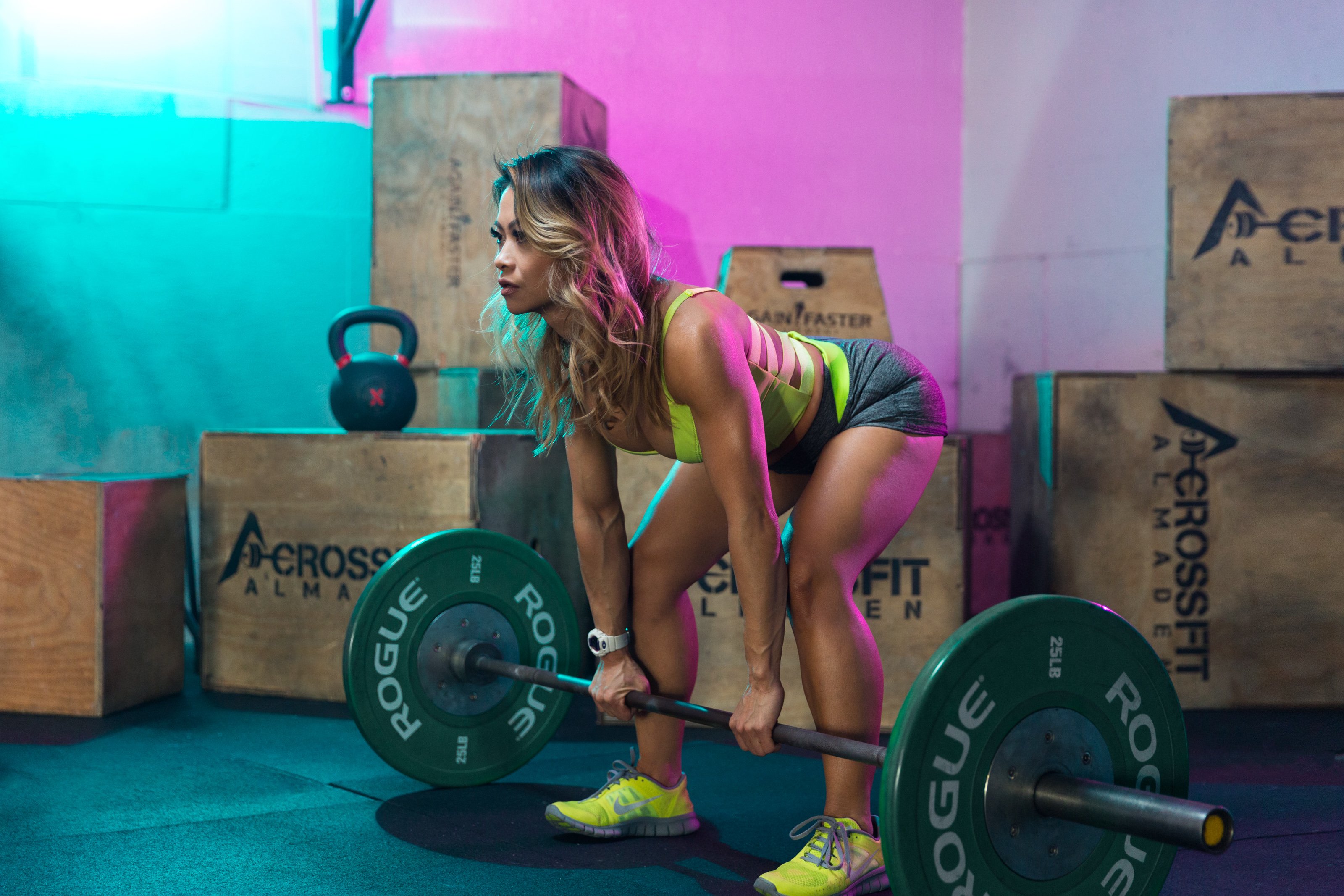
Image curtesy of Kathy Nguyen @fitgoddess55
It can be adapted in several ways in accordance with your ability and what you have access to.
- You can add weight/resistance with kettle bells, dumb bells, bands or with an olympic bar.
- You can go for a Romanian Deadlift (sometimes called good morning) to target your high hamstrings more exclusively.
- You can increase the difficulty and focus more exclusively on hamstrings with the Single Leg Romanian Deadlift which will also challenge your balance.
Calves
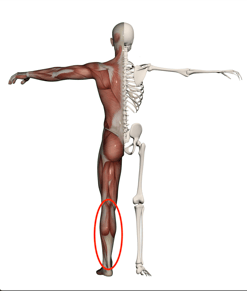 Calf strength can help with leg spring stiffness for runners and complement ankle and knee stability. Good exercises for you calves are heel raises which again can be adapted in various ways according to your base strength, goals and what equipment you have available.
Calf strength can help with leg spring stiffness for runners and complement ankle and knee stability. Good exercises for you calves are heel raises which again can be adapted in various ways according to your base strength, goals and what equipment you have available.
- Single leg heel raise can make this exercise harder.
- Adding weight by carrying extra weight as you do them (dumb bells, kettle bells, or even just a weighted rucksack).
- Off a step where you allow the heel to drop below the step so you have more weight and a greater range of motion in the exercise.
- Bending the knee helps this exercise target ankle stability and you can use all the variations described above with this variation.
Back
 It's important to have a strong back to maintain good posture on the bike and when running so any exercise that enables you to keep you shoulders open and promotes a tall stance works well. A good exercise to help achieve this is the back extension which again can be performed in a variety of ways.
It's important to have a strong back to maintain good posture on the bike and when running so any exercise that enables you to keep you shoulders open and promotes a tall stance works well. A good exercise to help achieve this is the back extension which again can be performed in a variety of ways.
Gyms will have a machine/frame that you can use to achieve a greater range of motion and helps you engage your stomach muscles to support your back.
You can also do the exercise at home lying on the floor.
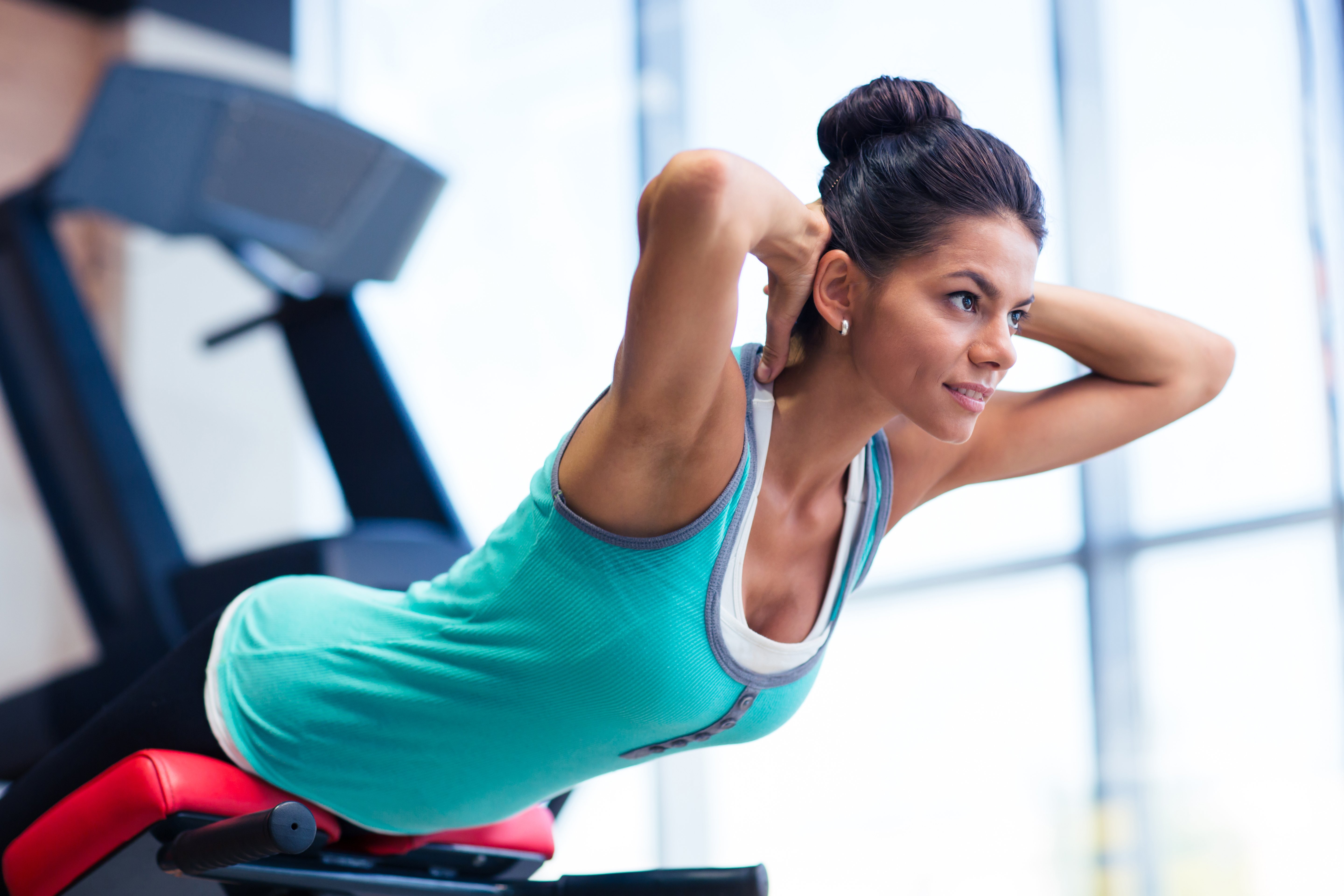
In each case you can add weight to increase the difficulty of the exercise.
2) Re-habilitation/Pre-habilitation
For many endurance athletes they turn to strength and conditioning when they are forced to due to injury. Usually the best exercises to follow are those given to you by a professional sports therapist or sports doctor. It often involves 'turning on' muscles that are not working or strengthening a weakened muscles after a tear or rupture and needs to progress at the appropriate level to the injury progression. Initial exercises often involve eccentric exercises (holding under tension/slide outs/slow releases) before building strength.
More recently we are starting to see the value of doing certain exercise to target idiosyncratic weaknesses before injury (pre-habilitation) so that you can maintain training consistency without neglecting the weaker areas. Good pre-habilitation exercises take into account your own specific weaknesses. If you are not sure what they are a safe bet is as follows:
For runners anything that promotes stability of the pelvis, knee and ankle.
e.g. Hip hikes/step downs off a step, bent knee heel drops, , lateral banded walks, balance challenging exercises on a bosu ball/balance pad or just using one leg (e.g. throwing a ball and catching it against the wall whilst standing on one leg).
For cyclists anything that promotes stability of the knee and good posture both on and off the bike.
e.g. Step downs, lateral banded walks, banded squats (just body weight/v.light weight), bent knee heel drops, back extensions (hold).
3) Muscular Endurance
Muscular endurance exercises can often be integral to rehabilitation/pre-habilitation work, but can also work well to target muscles that you are unable to target in training. Examples include a runner who lives somewhere very flat who wishes to do a mountain race or a cyclist who is rehabilitating chronic injury where there is a noticeable weakness in one side over the other.
Muscular endurance in general means lots of repetitions with a short amount of rest in between.
e.g. 3-5 sets of 20-30 reps with 30s to 1 minute recovery.
Examples might include
Lunges (forwards or backwards) to encourage balance, core strength and good posture.
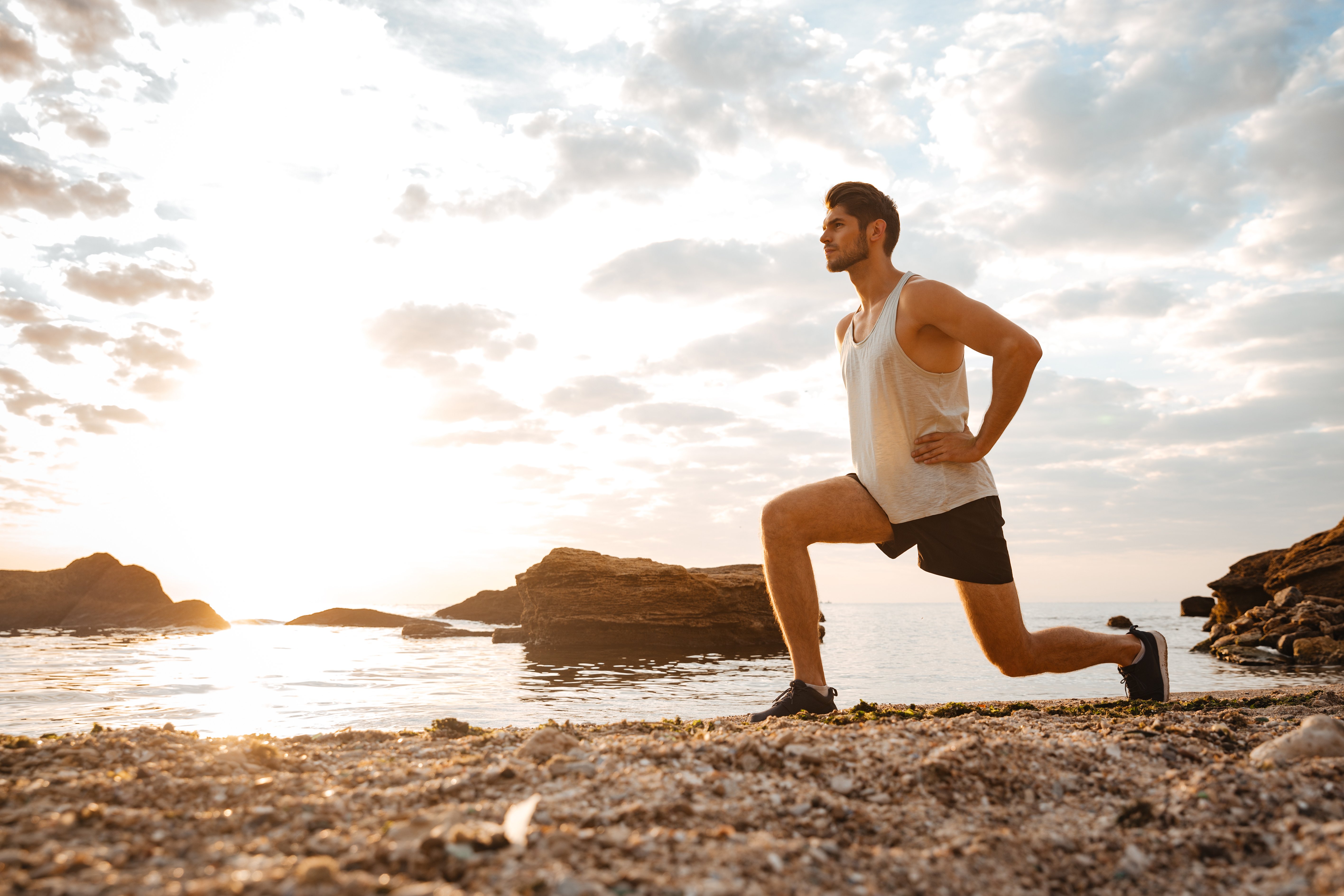
Step ups to increase uphill endurance
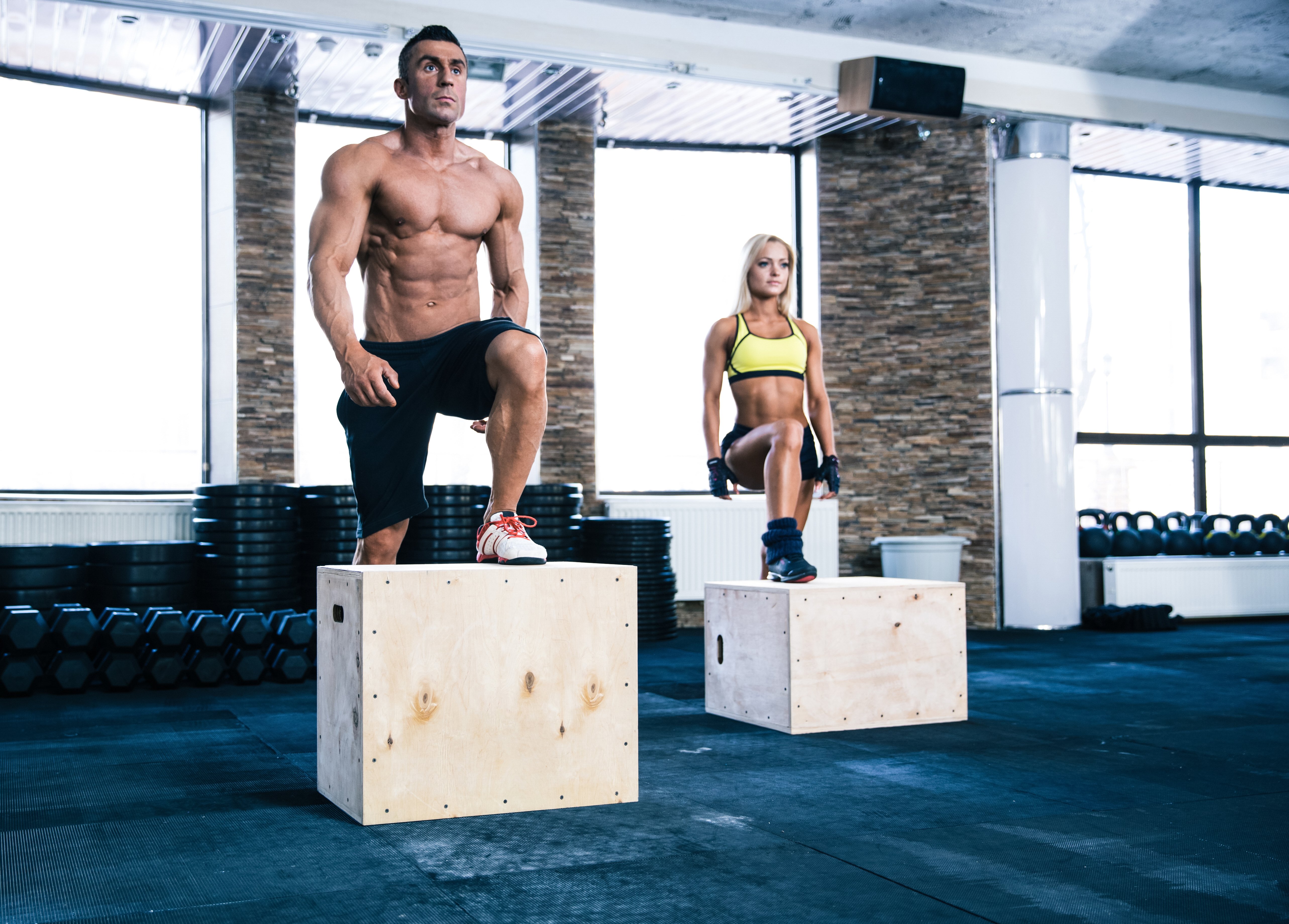
Battle ropes for arm strength in mountain biking.
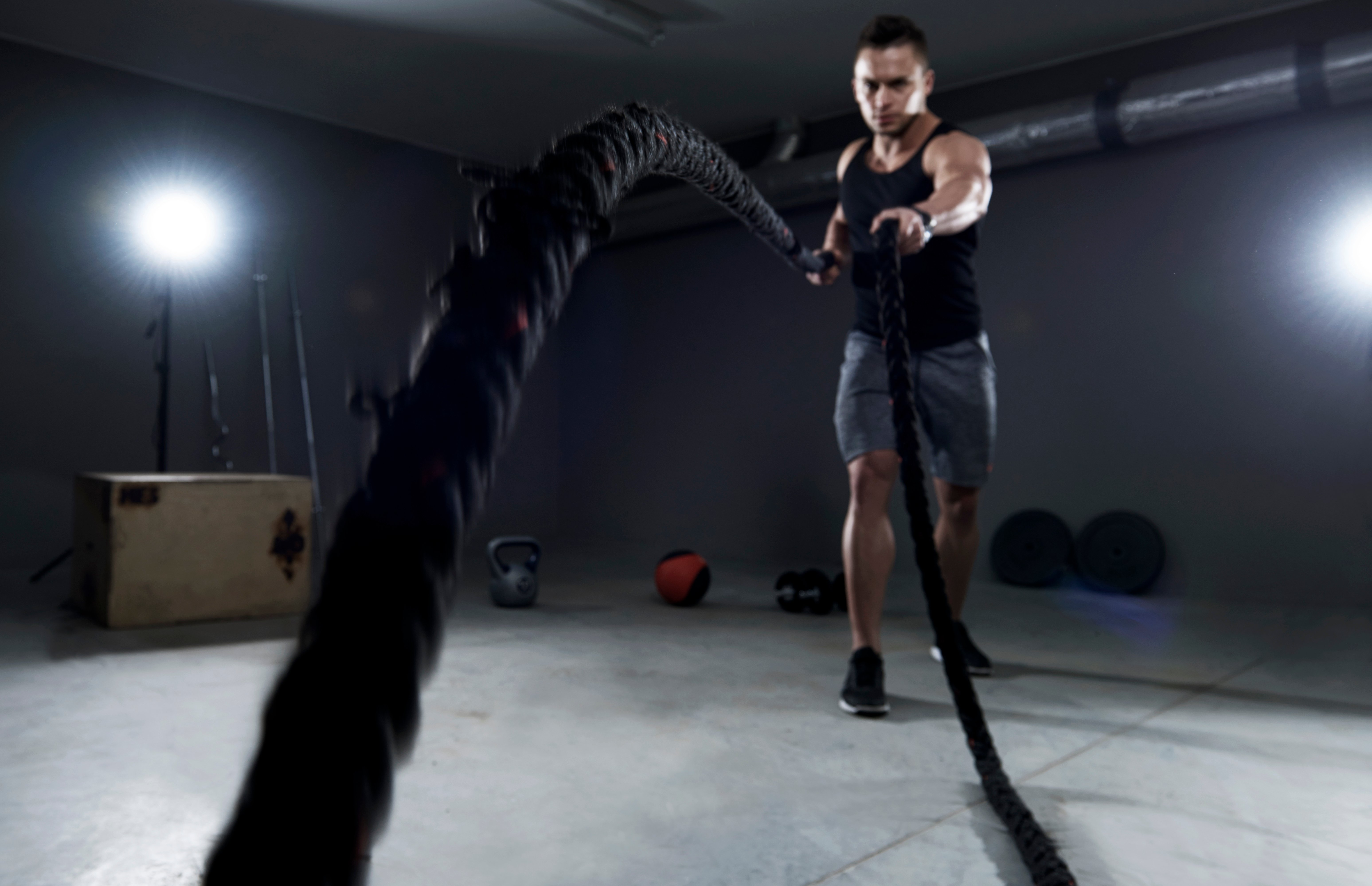
Circuit training - great because you can often find a group to do this with and it targets a range of muscles due to the variety of exercises.
4) Training your Core
Having a strong core is integral to maintaining good posture and providing support for your joints and muscles. Poor core strength leads to poor posture both during and outside sport so including some core work either as a separate workout or as part of you strength session is very helpful.
If you are planning on lifting heavy (free) weights then engaging your core is integral to maintaining good form throughout each lift.
In general pilates, yoga Tai Ch'i type exercises where you are required to hold poses or engage core muscles through gentle movements can work well. The key, especially with yoga, is to work within your own capabilities and remember you do not need to be very flexible to run and cycle, you need just enough range of motion to do your sport.
A great all round core exercise is the plank hold; this can be adapted and performed anywhere with no equipment. In fact for athletes who struggle to do any strength I often suggest they just do plank. There are many variations:-
- You can extend the time of the plank hold/decrease the amount of rest between each hold.
- You can increase difficult by raise one leg and/or one arm.
- You can target different muscle groups by doing side planks or upside down (facing upwards as opposed to downwards).
- You can include leg lifts to work hamstrings/quads/stomach
- You can rest on your hands rather than your elbows.

5) Functional Strength
Functional strength combines strength gains with movements associated with your sport/what you are trying to achieve. They can be a good way of ensuring that not only are you strengthening the muscles but that you are using them in the course of the cycling/running cycle.
A good functional strength exercise is the walking lunge which targes balance, quads and glutes and good posture. Again it can be adapted and varied to increase difficulty and in line with what you are able to do.
- You can do them forwards and/or backwards
- You can do box lunges to increase the difficulty
- You can do them weighted
- You can do them with an olympic bar with the aim of keeping the bar straight; the difficulty can then be increased with a water filled bar (like the bosu surge 40)
- You can do them on an uneven surface.
- You can combine them with a (weighted) arm lift
6) Mobility/Stretching
While you don't need to be very stretchy or mobile to run or cycle you do need an adequate range of motion to do your sport so keeping things supple and mobile is important.
Stretching can help open out tight areas, but there is a danger of over-stretching, especially for the super keen and often some mobility exercises combined with some targeted foam rolling can work just as well if not better.
These exercises are often best given by a qualified physiotherapist/sport physician who has assessed you and can see where you might be blocked and what might need freeing. In general these type of exercises work well if you do a very small amount (e.g. 5 minutes) frequently 1 -3 times per day.
A good examples include spinal rotations, hip rotations (90/90), pelvic tilts.
Keeping your spine moving and mobile is key to both running and cycling and back complaints are common with all my clients. Doing 10-20 spinal rotations and some pelvic tilts every day before you get out of bed could go a long way to helping with lower back stiffness.
There is also some good evidence in runners that stretching quads can have a positive impact on performance so foam rolling/stretching your quads for a few minutes two to three times per week might prove beneficial.
7) Plyometrics
Plyometrics involve accentuated movements in which you need to combine both strength and power. They are often a key part of a sprinters training programme. For endurance athletes, whilst they can have some benefits, they also carry a lot of injury risk so I would always advise caution with these types of exercises, especially if you have a history of injury.
Additional Questions?
Do I have to do all of the exercises in this article?
It's usually better to pick primarily a regime that you know you can do frequently and consistently. Doing a combination of endurance, strength and functional strength in two to three sessions per week can work well. If all you can manage is a bit of pre-habilitation/re-habilitation then doing this after your usual endurance sessions can be a good way to make sure you fit it in. A good example of a combination of exercises is shown in this YouTube Short.
November 10, 2023


Comments